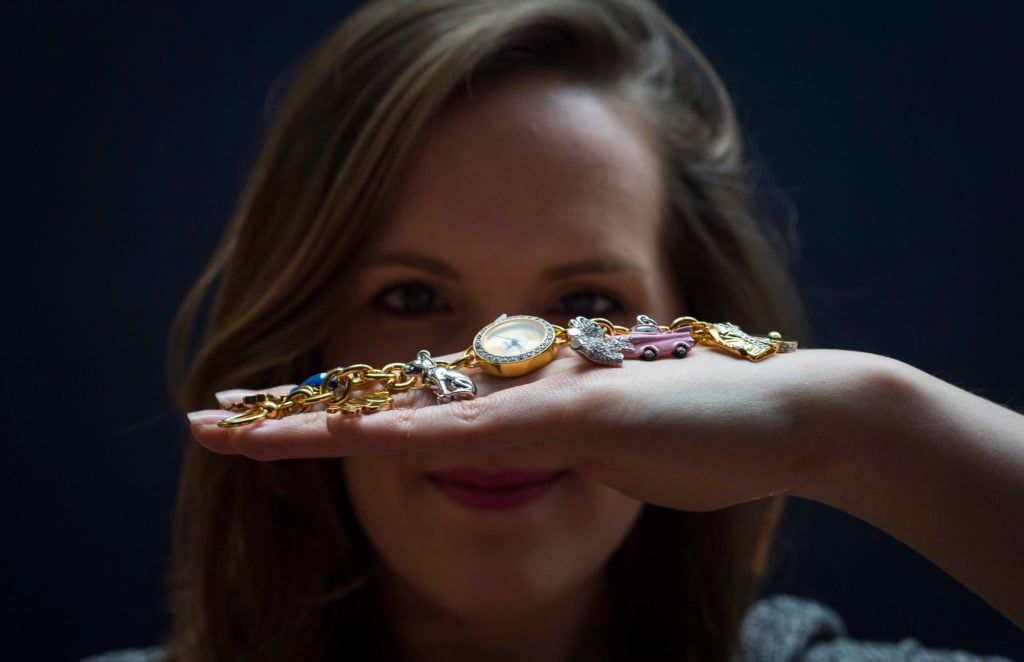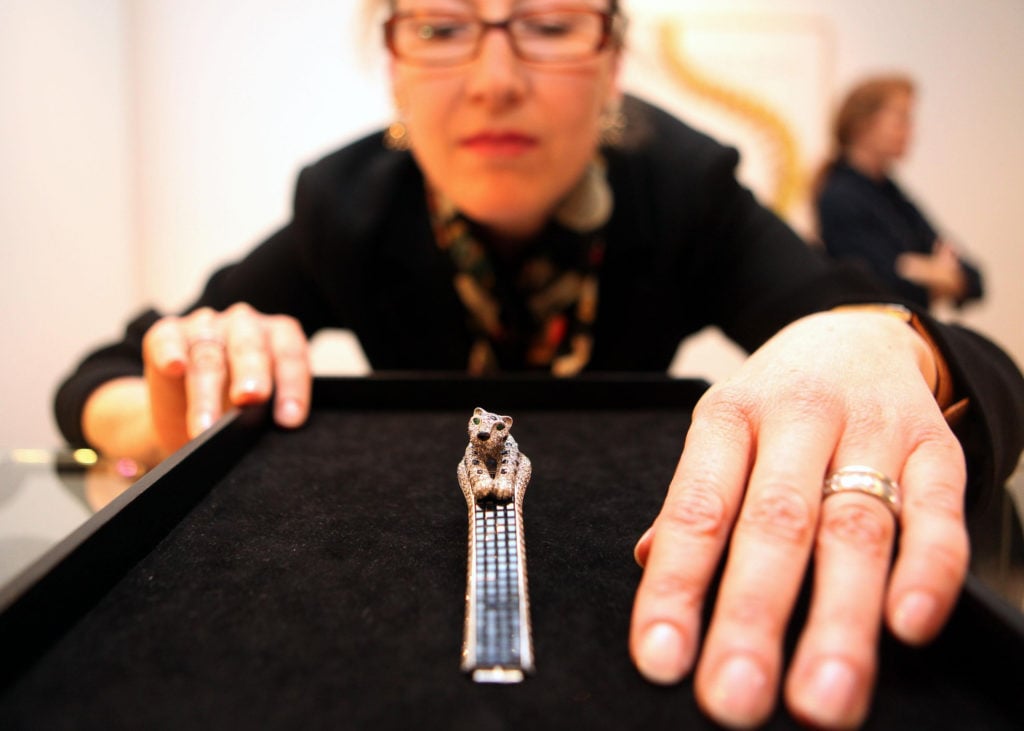Market
The New Bling Ring? How the Big Three Auction Houses Raked in a Whopping $1 Billion in Watch and Jewelry Sales in 2019
Asian collectors, younger buyers, and online sales all contributed to the thriving market.

Asian collectors, younger buyers, and online sales all contributed to the thriving market.

Brook Mason

Fighting fiercely over major Rothkos and Hockneys is nothing new for Christie’s, Sotheby’s, and Phillips. But now, with the jewelry and watches market heating up considerably, the competition is just as stiff for these luxury design items.
Last year, the Big Three auction houses carved up a $1 billion pie, and staggering prices and records have become the norm. Case in point: Sotheby’s sold a pink diamond weighing a hefty 59 karats in 2017 for a record $71.2 million. Even prices for period gems are soaring to new heights. At Sotheby’s, Queen Marie-Antoinette’s pearl-and-diamond pendant flew past its $2 million high estimate to sell for $36.2 million to set a record for an antique jewel. Meanwhile, Christie’s racked up a record $109.3 million in a June sale of items from the vastly overlooked Indian jewelry and jeweled objects category. And at Bonhams, 2019 was a big year, as the house pulled in $49.7 million in jewelry sales, snatching up 6.4 percent of the market share.
When it comes to watches, Phillips reigns supreme. A mere year ago, the auction house’s worldwide head, Aurel Bacs, hammered down 12 watches that drew more than $1 million each for a total of $22.7 million.

A Sotheby’s employee models a Platinum, Diamond and Sapphire ‘Panthere’ wristwatch by Cartier. Photo by Katie Collins/PA Images via Getty Images.
Exponential wealth, the ever-greater concentration of money in the hands of a few, and a vastly expanding client base is driving prices up, up, and away. New collectors are even coming from the African continent, and an increasing number of women are snapping up jewelry on their own.
And while the three auction houses have somewhat different strategies in hunting for new buyers, they’re all placing a heightened emphasis on online sales and social media. Last year at Christie’s, 25 percent of jewelry sales were to new buyers, with total sales jumping to $433 million.
“Clients are buying sight unseen like never before, and digital media is driving sales,” says Daphne Lingon, who heads Christie’s jewelry division in the Americas. She says online sales have jumped by 32 percent.
Even so, Sotheby’s beats Christie’s hands down when it comes to the web. Fifty percent of Sotheby’s buyers placed bids online, says David Bennett, the company’s worldwide chairman for jewelry. And the auction house has been expanding its international footprint: three years ago, it began holding watch auctions in Dubai, and in 2018, it launched jewelry sales in Paris. Last year, Sotheby’s added up $287.3 million in jewelry sales.
Overall, Sotheby’s has a far broader approach when it comes to catering to clients. Bennett has set up three different tiers of sales with a “Magnificent Jewels” division, which encompasses high-priced rocks and other gems, at the top. The “Fine Jewelry” hits lower price points, and online sales are for even lower-priced items.
“That particular audience goes after jewelry in the $3,000 to $5,000 range, like Bulgari earrings from the ’70s that you can wear to the grocery store,” says Quig Bruning, a vice president at Sotheby’s, of online bidders.
By contrast, Phillips raked in $22.8 million at their jewelry sales—a significantly smaller figure, but a 225 percent increase since 2014, when former Christie’s CEO Ed Dolman took the helm of the company. Since signing on, he has reined in a stunning 15 new hires for Phillips’s jewelry and watch department, including Susan Abeles in New York and Graeme Thompson in Hong Kong.

Sotheby’s head of International Watch Division Daryn Schnipper holds the Henry Graves Supercomplication timepiece by Patek Philippe. Photo courtesy of FABRICE COFFRINI/AFP via Getty Images.
And of course, each auction house is going after collectors out East.
“Asians are the most active buyers in the world, and more than 30 percent of our art, jewelry, and wine clients hail from Asia,” says Rahul Kadakia, who leads Christie’s international jewelry department. He also notes that 30 percent of the under-bidders for jewelry came from Asia, and that another 30 percent of the buyers at Christie’s Indian jewelry sale in June came from Asia.
Thompson is seeing a generational shift among these collectors. “For them, it’s no longer solely about pearls and jade,” he says. “What’s new is that, just like our other clients globally, they want contemporary jewelry to go with their art and design holdings.”
Thompson, Kadakia, and Bruning all say that some jewelry collectors cross over into art, and vice versa. “But those who buy at our ‘Magnificent’ sales are the biggest art collectors,” Bruning adds.
When it comes to hawking watches, Bacs takes a totally different tack and focuses solely on the top end of the market.
“We have no secret weapon,” says Bacs, who maintains an advisory firm with his wife called Bacs & Russo, which partners with Phillips. “Rather, we appeal to the heart and the mind.”
“We offer more knowledge,” he adds. “Practically not a single day goes by when we don’t hold an event, whether it be cocktails, dinners, seminars, or private meetings with clients.”
Bacs contends that, among watch collectors, who are overwhelmingly male, a growing number own in excess of 20 pieces, with many priced in the high six figures and up. Twenty-five years ago, he says, his clients were predominantly between 50 to 75 years of age. “Today they’re from 30 to 50 years old, with some in their 20s,” he says.
Just like his counterparts at Sotheby’s and Christie’s, Bacs is seeing some art collectors taking on watches. “Many cross over from cars, wine, and design,” he says.
But will watch and jewelry collectors jostle for contemporary artworks tagged with mega-million-dollar price tags? Only time will tell.